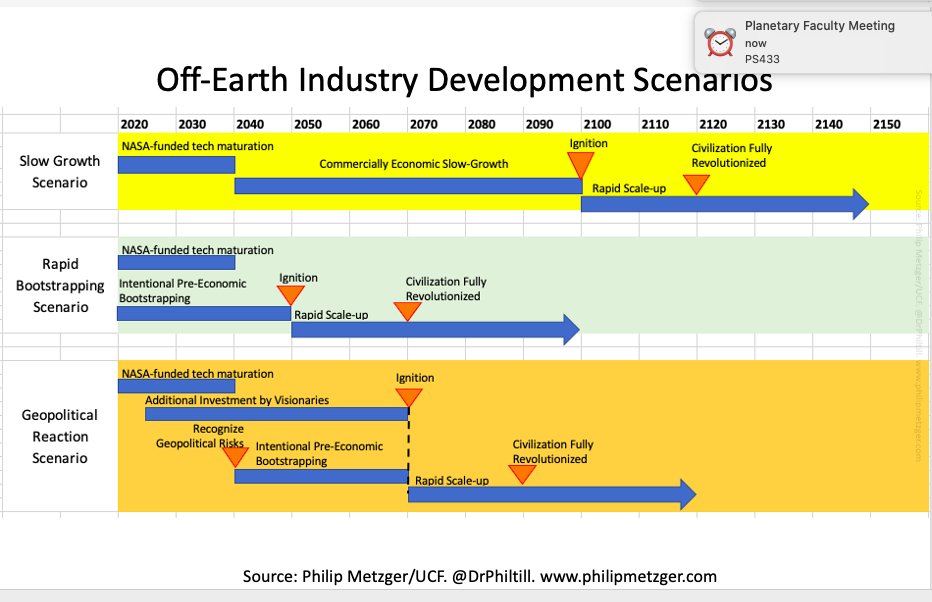Three scenarios how industry may develop in space. "Civilization Fully Revolutionized" means offloading industrial footprint from Earth to save the planet, all humans benefit from developed economies (health care, etc..."Post Scarcity"), vastly greater horizons for science...1 

2/...reaching to the stars. The Slow Growth Scenario means only government space agencies like NASA invest pre-economically in off-Earth industry, and we leave commercial businesses to slowly develop profitability and new business cases. Because space is hard, this is slow.
3/ The Rapid Bootstrapping Scenario means there are actors motivated to make it happen faster than the market forces will do. They may be visionary individuals with means, citizen-led movements, or governments that see the long-term benefit of getting beyond our planetary limit.
4/ Because rapidly bootstrapping a full supply chain in space is beyond the means of even the wealthiest individuals, and because it is hard to convince people of the benefits of something so abstract, we are not (yet) on the rapid pathway. So...
5/ at the present I think the third path, the middle-speed, is the most likely. That's where we have a combination of space agency investment, some visionary pre-economic investment, and some commercial growth. Eventually the progress they collectively produce proves the case...
6/...then politicians finally realize there is a looming revolution only decades away, and it could be very very good, or very very bad, depending how it goes down. I think that's when national governments go all-in to shape it according to their own visions of the future.
7/ It MAY or may NOT be a great outcome, depending who wins the race to shape the future and how enlightened they are. When they reach "ignition", they will be in a position to abandon negotiation and to never again dilute their equity in this off-Earth industry. So...
8/...now is the time to shape the future of industry in space. It is a limited time between now and "ignition", and the stakes are huge. Let's work together to make the world of our children and grandchildren just, healthy, safe, and amazing. One way to do that is.... 

9/...to create a movement that puts us into the Rapid Bootstrapping Scenario, to create a coalition of likeminded citizen movements and enlightened governments committed to a good future so we reach the "ignition" point first by being fast. Can we do this? I think we can.
• • •
Missing some Tweet in this thread? You can try to
force a refresh
























